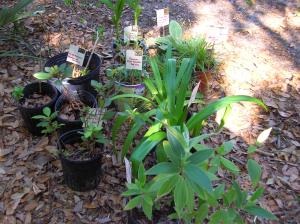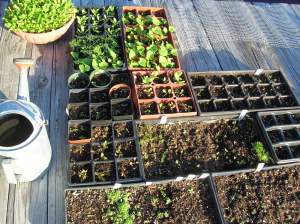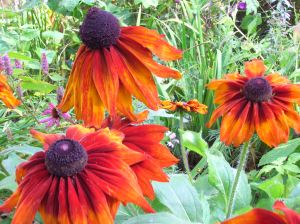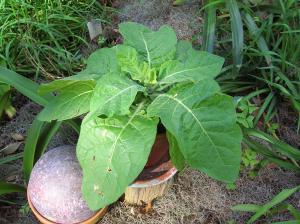
A few of the exchange plants at last year's PlantX.
Will you be in Northeast Florida in early April? It is time to get ready for the 11th Annual Palatka Daily News Perennial Exchange (PlantX). This year marks 11 years of fun and free plants. Now’s the perfect time to start rooting and dividing those perennials so they’ll be ready for the exchange.
As usual, participants are asked to bring at least 10 potted — and labeled — perennials for exchange. Please refrain from bringing invasive plants such as Mexican petunia, firespike or sword fern. Consider instead bringing flowering shrubs such as hydrangeas, azaleas and heirloom roses, perennials such as hybrid daylilies, perennial salvias, gingers, bulb plants such as amaryllis or lycoris, water plants such as Louisiana iris or hybrid waterlilies or perennial herbs such as lemon grass, rosemary or lavender.
In short, you’ll want to share your favorite perennials with the group. The mix is always changing and there will be lots of diversity of plants from which to choose. And as usual, there will be door prizes as well, and the best part is that everything is free.
To take part in the event, send a self-addressed — and stamped — envelope to: PlantX, Palatka Daily News PlantX, P.O. Box 777, Palatka Florida 32178 by March 14, and your invitation will be mailed to you.
 Area gardeners want to get seeds started right. Most annuals, and a whole lot of vegetables do best when started in flats with good-quality potting soil, rather than sown directly into the ground. When plants are an inch or so high, carefully lift plants from the potting soil, separate and re-pot into cell-packs so that seedlings can develop healthy, robust root systems.
Area gardeners want to get seeds started right. Most annuals, and a whole lot of vegetables do best when started in flats with good-quality potting soil, rather than sown directly into the ground. When plants are an inch or so high, carefully lift plants from the potting soil, separate and re-pot into cell-packs so that seedlings can develop healthy, robust root systems. This is a great time for Florida gardeners to start Rudebeckias from seed for spring bloom. Started now, gardeners can expect most varieties to bloom by late April. ‘Cappuccino’ is a new variety from Fleuroselect. Handsome large flowers with coppery centers are produced on compact plants. Also known as brown-eyed Susans, Rudebeckias should be grown in sites with at least a half day of full sun.
This is a great time for Florida gardeners to start Rudebeckias from seed for spring bloom. Started now, gardeners can expect most varieties to bloom by late April. ‘Cappuccino’ is a new variety from Fleuroselect. Handsome large flowers with coppery centers are produced on compact plants. Also known as brown-eyed Susans, Rudebeckias should be grown in sites with at least a half day of full sun. 
